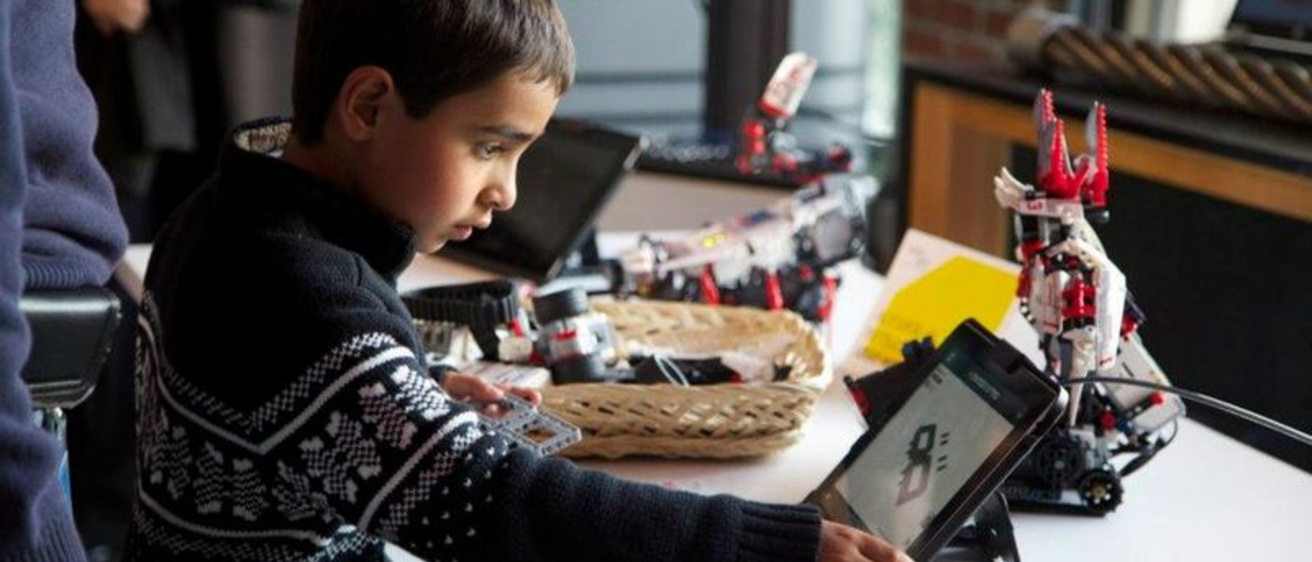Seven years ago when Juan Pablo Hourcade (Computer Science, CLAS) published a review article about designing technologies for children, smartphones were not widespread, the iPad hadn’t been introduced, nor had motion-sensing gaming devices like Kinect. A lot has changed in terms of how children can access technology and what they can do it with. And yet there still is not a succinct overview of the growing and interdisciplinary field of child computer interaction. Hourcade intends to change that with his forthcoming book Designing Technologies for Children.
Bringing Disciplinary Strands Together
Technology design for children sits at the intersection of computer science and education, with child psychology, communication studies, cultural anthropology, sociology, graphic and industrial design, and the history of technology thrown into the mix. Each of these areas approaches the topic of children and technology differently. Part of Hourcade’s goal in publishing an overarching book is to help the various disciplines to better understand each other and also assist a newcomer to the field in understanding the various disciplinary strands.
Hourcade became interested in this discipline by accident. As a new computer science graduate student, he was asked by a faculty member to help design a storytelling program for kids. “I was 24 years old and not particularly interested in working with kids,” he recalls, “but over time I gained experience and came to really enjoy it.”
Influence of Seymour Papert
Like many in the child-computer interaction field, Hourcade was influenced by the constructionist theory of learning developed by MIT scholar Seymour Papert. Considered one of the most successful of Jean Piaget’s students, Papert created Logo, a programming language designed to assist children in learning through technology. Logo was the progenitor of the Lego Mindstorms robotics and the Scratch programming language.
“Papert’s tradition emphasizes creativity and motivation,” says Hourcade. “There’s a big contrast between it and the behaviorist approaches that are used in educational software that is more focused on ‘drill and skill,’ together with positive reinforcement.”
Although Hourcade has long considered himself in the first camp, the research for this book has helped him to see value in the behaviorist approach: “It offers building blocks and basic skills that can then allow a child to do the higher thinking and more creative work.”
Bridging Brain, Body, and Environment
Hourcade hopes his book will help people to update some of the research on which their work is implicitly based. “In the child-computer interaction field, people still refer to developmental psychology theories that are pretty old, like Piaget,” he says. More relevant and contemporary work, however, comes from theorists working on embodiment, connectionism, and dynamic state theories, all of which bridge what we know about neuroscience with development. These theories, says Hourcade, posit that development does not occur in isolation in the brain, but rather is the result of interactions among the brain, body, and environment.
The different approaches to technology design are acutely obvious in debates over schooling. On one hand, there is increasing proof that we all learn differently and that every child has individual passions that can fuel his or her learning. Connecting with the maker movement, contemporary technologists are devising increasingly sophisticated ways for kids to relate to computing by plunging in as inventors. Designing and creating programmable clothing via a product like Lilypad Arduino or designing and creating toys with a 3D printer are all possible now.
At the same time, schools remain tied to computers as a tool to review skills. Computers, unlike impatient human minds, provide neutral, unvarying, repetitive exercises.
Gaps Between Approaches
Problems crop up when people designing technology from a computer science background don’t talk either with their colleagues in education or with children themselves. Hourcade cites the well-known One Laptop Per Child program that was launched to provide affordable educational devices for the developing world. While the program, led by Nicholas Negroponte, founder of MIT’s famed Media Lab, inspired enthusiasm and funding behind it, little thought was given to how the computers would work within existing school programs.
“There wasn’t a careful study done of the environments of these schools,” comments Hourcade. “It turns out that the types of activities that could be done on the laptops and that the program’s founders were envisioning weren’t aligned with what teachers are supposed to teach and what they were trained to do with technology.”
Making the Work Available Via Self-Publishing
Hourcade is self-publishing the book, which he hopes will be available later this year, in order to share it free of charge. He was inspired to create this open-source resource by his experience with the initial article. When he cited the article to which readers had to link and purchase, very few people downloaded it. But once he realized that he owned the copyright, he posted it directly to his website and citations increased dramatically.
“I want this to be as accessible as possible,” he says, explaining that he expects that many people will choose to download just one or two chapters. In order to ensure quality, he is recruiting reviewers for individual chapters and also hiring a proofreader. How it looks is much less important to him than that it gets used, helping a diverse group of thinkers expand their work.
To view some of Hourcade's projects, including an application that supports children diagnosed with autism spectrum disorders to communicate and collaborate more freely, visit his website: http://homepage.cs.uiowa.edu/~hourcade/research.php.
